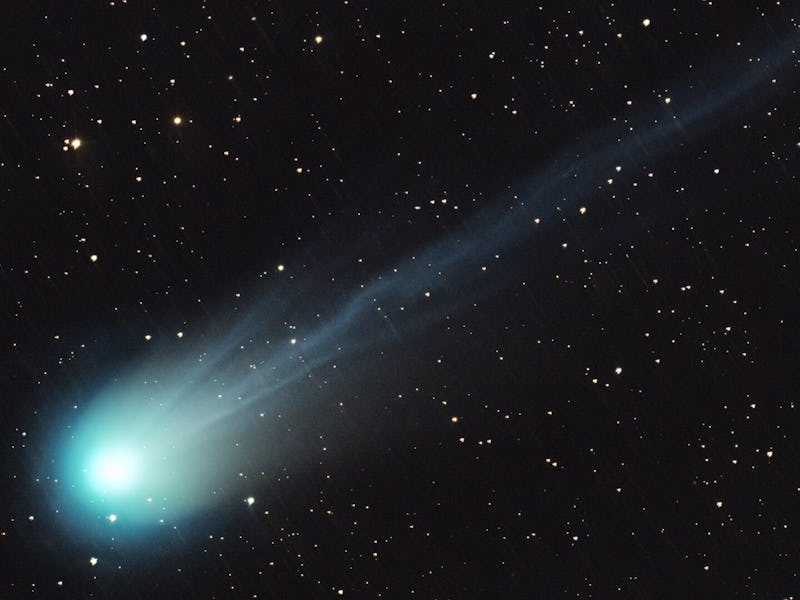Look up! This Iconic Comet Is Hiding Near the Sun Right Now
Catch this comet before it disappears until 2095.

Comets have survived more than four billion years, lurking far beyond the orbit of Neptune. But now one of these dusty, icy objects, called 12P/Pons-Brooks, hides near the Sun.
Comet 12P is a large relic of the ancient Solar System. Over the last several decades, it flew more than 3 billion miles toward the Solar System’s heart, where it now resides. Currently, it is sublimating, or going directly from ice to gas. As this happens, dust that had collected on the ice forms a characteristic hazy halo and tail.
Astronomers estimate that there are millions of comets in the Kuiper Belt, a region far beyond Neptune’s orbit. Trillions more comets could be hiding in the Oort Cloud located even farther away, according to NASA. When comets get dislodged, and begin their decades- or centuries-long orbits towards the center of the Solar System, astronomers and other space enthusiasts are eager to catch a glimpse.
This diagram from the European Space Agency (ESA) shows the orbit of comet 12P/Pons-Brooks around the Sun, and its location on March 14, 2024.
Science and beauty
Comets are a special delivery. The ancient stuff left over from the formation of the Solar System lingers in the distant edges of the Solar System. Comets are pristine samples of this first phase. Not only that, comets could hold clues about how life formed on Earth. Research has suggested that comets made their way to Earth billions of years ago and seeded our planet with life’s building blocks.
Comet 12P is currently near the Sun. Skygazers may find it by aiming binoculars toward the horizon at twilight or may get lucky enough to see it near the total solar eclipse as the New Moon dims the Sun enough to, possibly, reveal this beautiful interloper.
Michael Kueppers is a project scientist on the European Space Agency’s upcoming Comet Interceptor mission. This mission will be the first to visit a long-period comet, which are comets that take more than 200 years to go once around the Sun. Comet 12P isn’t that elusive. But it’s on par with the alluring Halley’s Comet, Kueppers tells Inverse.
US astronomer Herbert Couper Wilson (1858-1940) drew these sketches of Comet 12P from January 21-22, 1884. They show a double tail.
Halley’s Comet last visited Earth in 1986, and won’t be back until 2061. Comet 12P has a similarly sized orbit. It takes 71 years to complete a single trip.
What will the comet look like?
If skygazers are fortunate to see Comet 12P, they’ll see a fuzzy circular patch in the sky. This is the nucleus of the comet, which has warmed up, and released a dusty halo called the coma.
There may also be a tail — or two. Comets boast iconic dusty tails, usually colored yellow. The Sun is very active right now, and as a result, has released a lot of solar radiation into space. When the solar wind strikes the comet, it could trigger the formation of a second tail, made of plasma. This feature would appear blue, thanks to ionized carbon monoxide, Kueppers says.
Comet 12P may be bright owing to its large size, too. Astronomers are still assessing the size of Comet 12P’s nucleus. But the upper limit of its size puts it at a whopping 30 km wide, which would be huge. Halley, by comparison, is already large, at roughly 15 km by 8 km in size.
There’s still plenty to learn about Comet 12P, and time is precious. Once it returns to the outer solar system, skygazers won’t see it again until 2095.